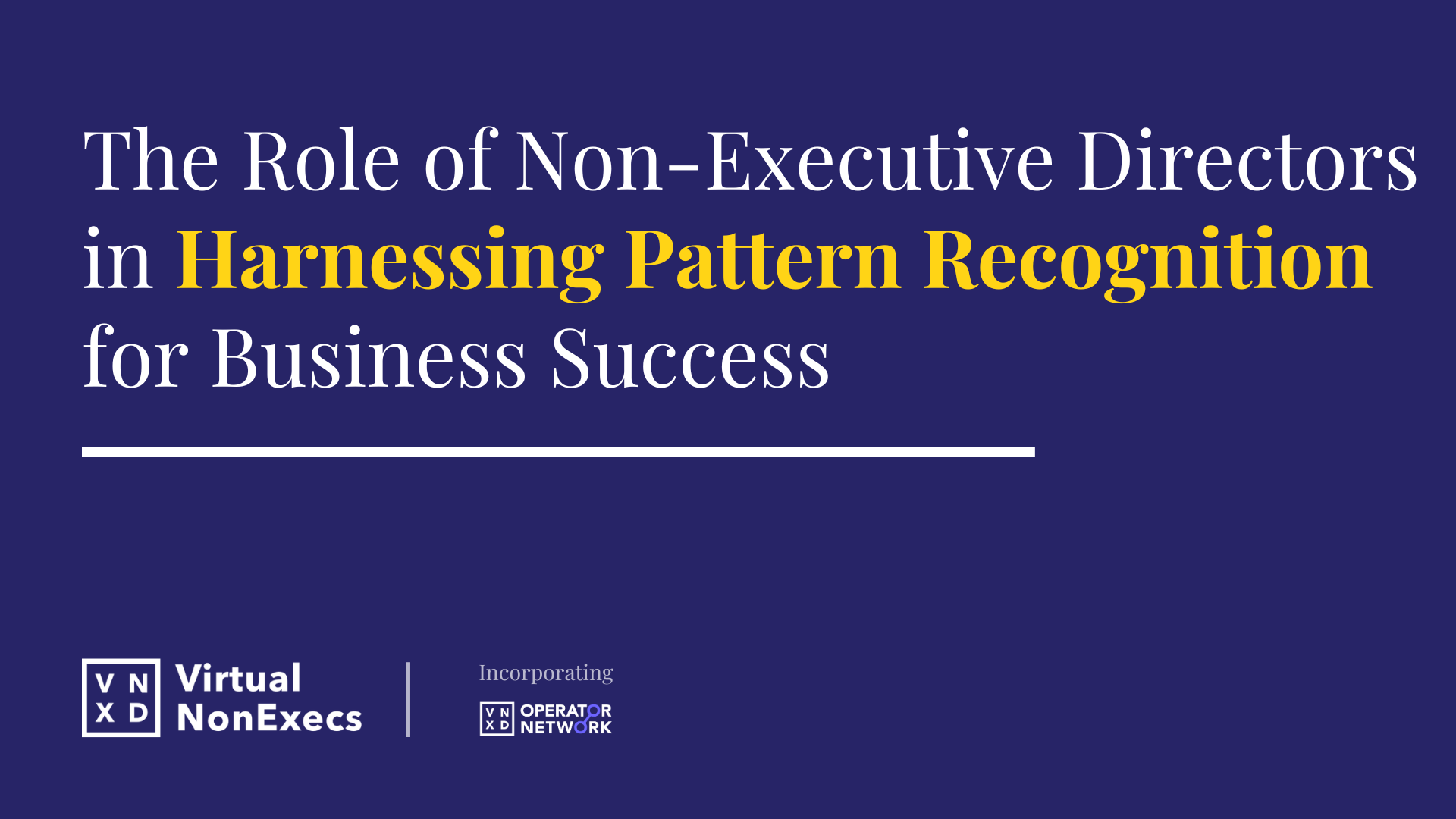In a business world awash with dashboards, forecasts and AI-generated insights, it’s easy to overlook one of the most powerful yet intangible assets in the boardroom: human pattern recognition. For experienced non-executive directors, this isn’t a buzzword. It’s a finely tuned radar, shaped by decades of lived corporate experience.
When Warren Buffett said, “What we learn from history is that people don’t learn from history,” he could well have been referring to the modern boardroom. NEDs, at their best, act as the corporate memory banks – the steady hand on the tiller when management is too close to the coalface to see the oncoming storm.
A Skill Forged in Experience
Pattern recognition in a governance context isn’t about data processing; it’s about narrative. It’s spotting when the energy of a founder-CEO is masking operational rot. It’s recognising the quiet signs of board complacency. And it’s understanding the unspoken – the tone, pace, and timing that suggest when a business is about to accelerate… or unravel.
Academic studies support this. Research from INSEAD and Harvard Business School describes this phenomenon as “expert intuition.” When executives or NEDs have seen enough repetitions of a situation, they are able to predict outcomes with uncanny accuracy – not because they have better data, but because they see the data differently.
Steve Jobs captured this best: “Creativity is just connecting things.” For NEDs, pattern recognition is just that – seeing the connectedness between past and present, between strategic ambition and operational reality.
Why Boards Should Care More
Despite this, many nomination committees remain overly focused on quantifiable skills: financial literacy, legal understanding, regulatory exposure. All important, of course. But they miss the subtle yet decisive value of hiring someone who’s led a company through a hostile takeover or navigated a market downturn five times over.
Sir John Timpson, the British retail magnate, famously said, “You don’t learn to run a business at business school.” In other words, the scars of experience often count more than theoretical training. Pattern recognition is one such scar. It’s not on the CV, but it shows up in the questions a NED asks and the instincts they follow.
Private Equity Gets It
In private equity–backed firms, where time is capital and mistakes are expensive, pattern recognition has long been prized – if not explicitly described as such. Many mid-market PE houses now insist on appointing NEDs or Chairs who have “done it before,” whether that’s international expansion, digital transformation, or sector consolidation.
Virtualnonexecs.com, a platform used by thousands of SMEs and investment firms to appoint board-level talent, reports a growing shift: “There’s a premium on pattern recognition – even if clients don’t call it that,” says its founder. “They want people who’ve lived through the mess, not just read about it. And they want someone who can spot the signs early, not when it’s already on the balance sheet.”
Tempering Instinct with Inquiry
Of course, unchecked pattern recognition can be dangerous. It can lead to overconfidence or false equivalence. The wise NED knows that instinct must always be challenged, tested and supported with evidence. But used judiciously, it can act as an early-warning system – far earlier than metrics or KPIs allow.
Daniel Kahneman, the late Nobel Prize-winning psychologist, warned: “Intuition is nothing more and nothing less than recognition.” The challenge for boards, then, is not to dismiss intuition as unscientific, but to understand where it comes from and how to use it responsibly.
In a corporate landscape shaped by volatility, uncertainty and perpetual transformation, the most effective NEDs may not be the loudest voices or the most polished presenters. They may simply be those who have seen this before – and are brave enough to call it out.
The boardroom of the future may be powered by AI, predictive analytics and real-time dashboards. But the businesses that thrive will be those that balance all that with something altogether more human: the quietly confident voice of experience that says, “We’ve been here before. Let’s act before history repeats itself.”

